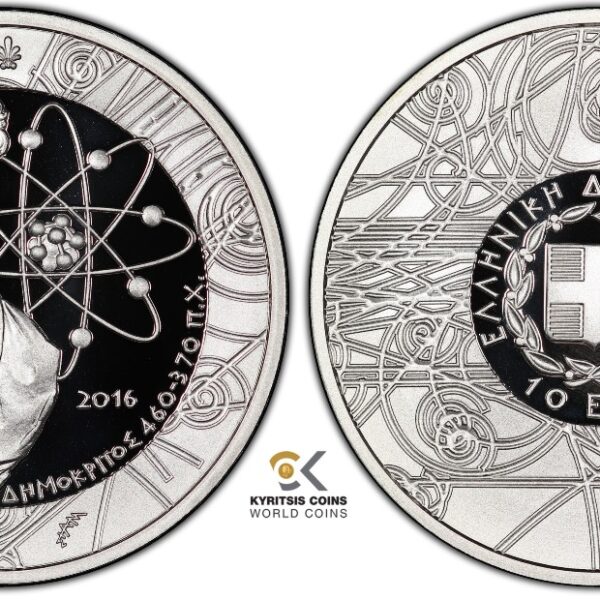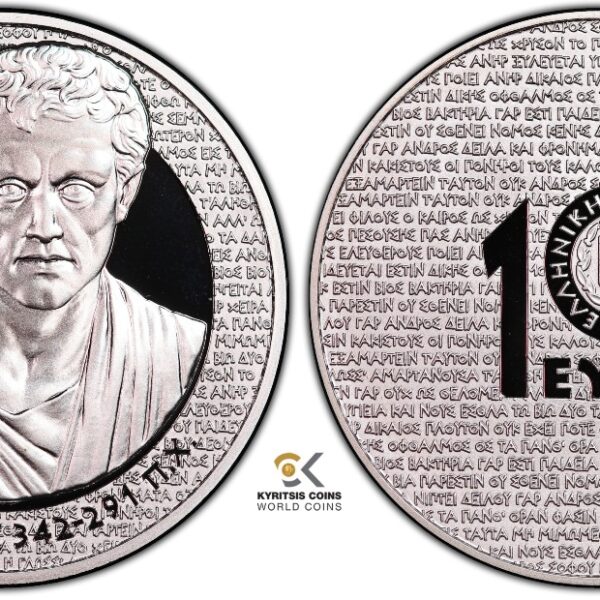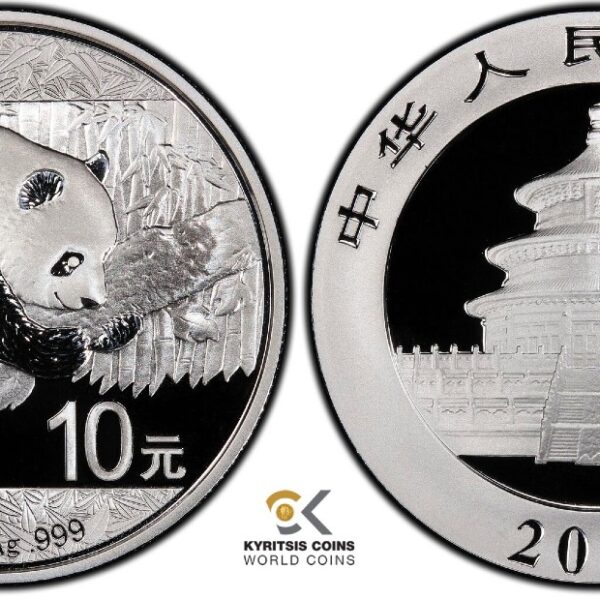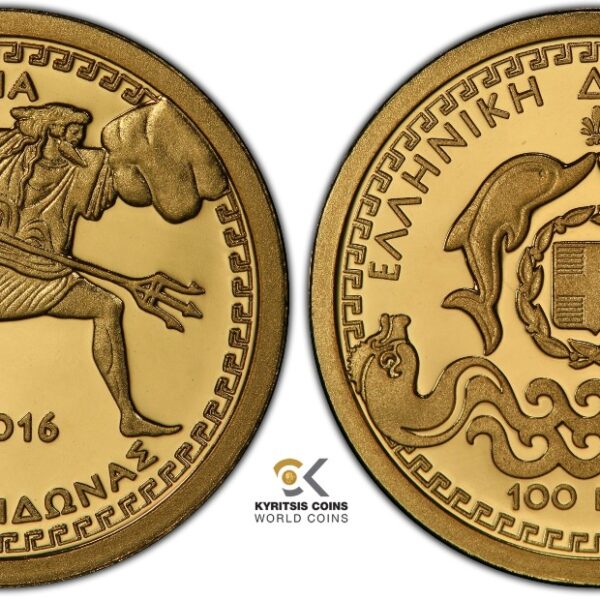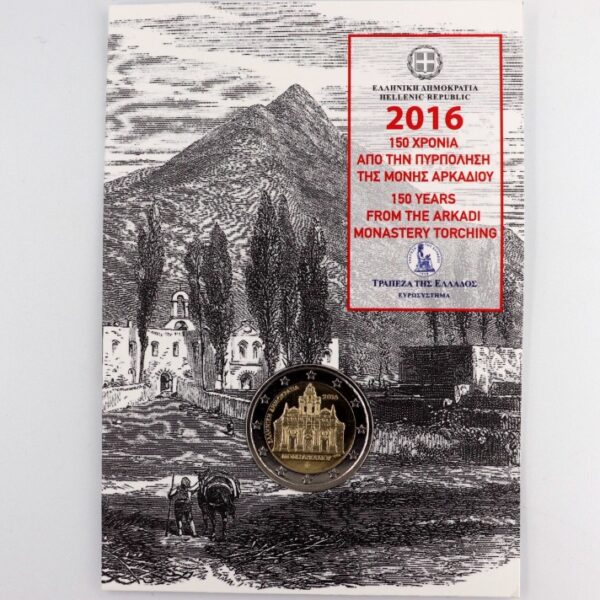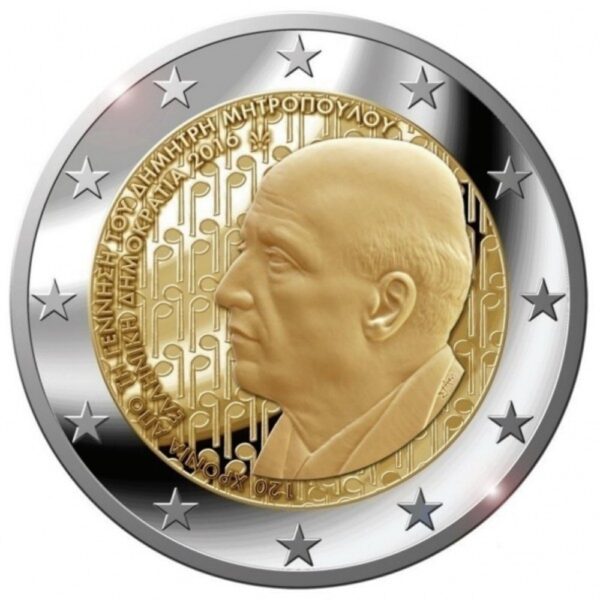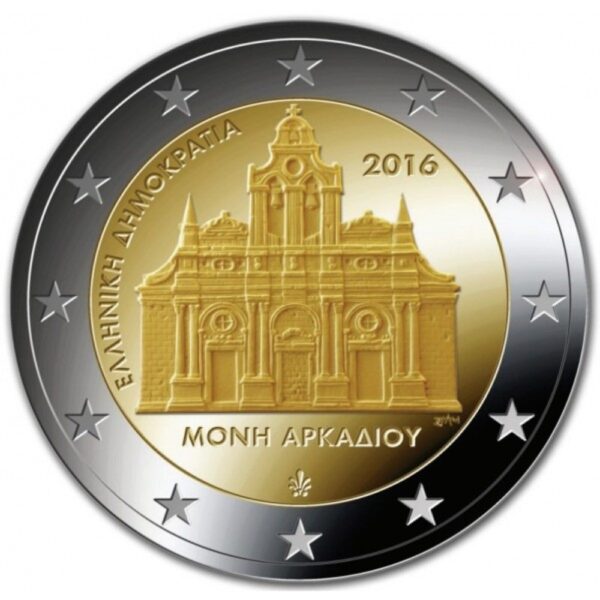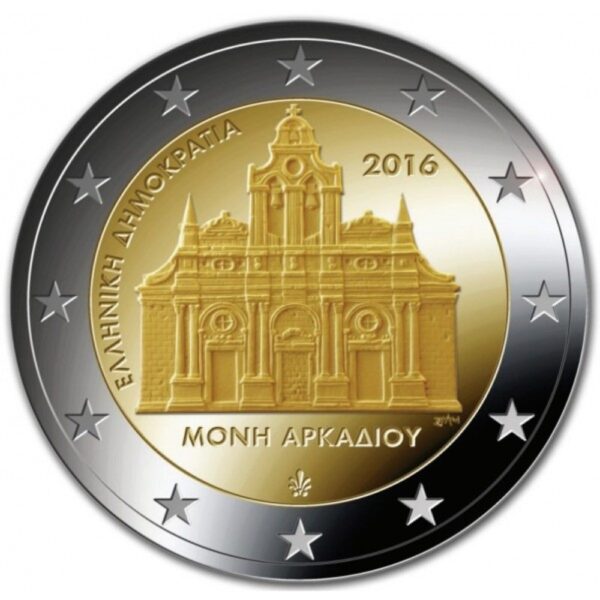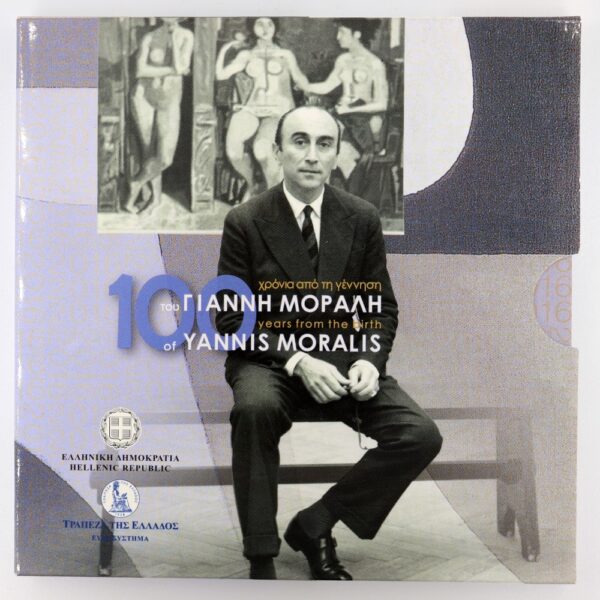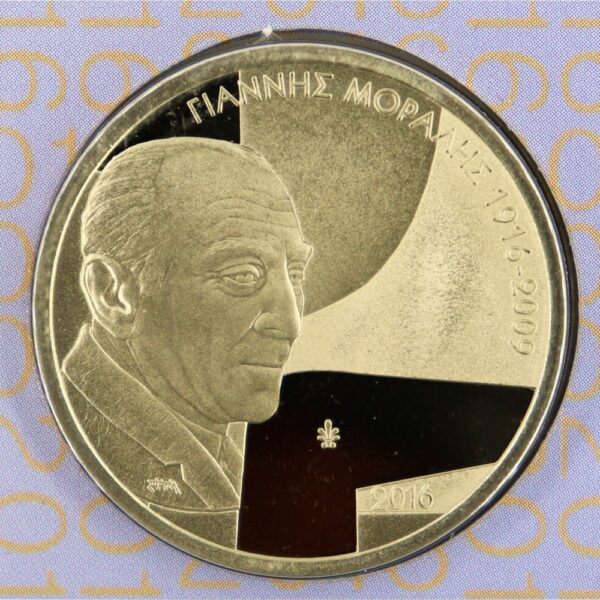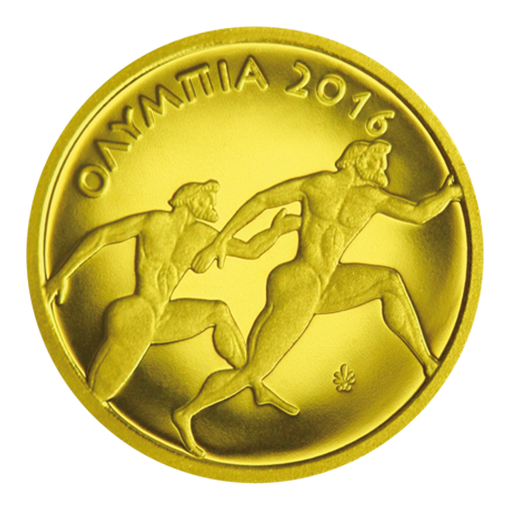2016
10 euro 2016 Proof Democritus
10 euro 2016 Proof Menander
10 Yuan 2016 People’s Republic Panda MS69 PCGS China
The Silver Panda is a treasured collectible for its yearly changing design. In 2016, this series changed to match the metric system. The 1 oz Silver Panda was replaced with the 30 gram Silver Panda, still containing .999 fine Silver.
The Silver Pandas were first minted in 1983. The first 3 years of mintage were in proof quality condition, and had a limited mintage of 10,000 pieces for each year. No Silver Pandas were struck in 1986, but they have been minted every year since then. Each year, the design of the panda changes making them highly collectible. The only year they didn’t change design was 2002, which used the same design as 2001.
The People’s Republic of China issues and guarantees the quality of each Silver Panda coin. Silver Panda coins are minted from several mints each year. Those mints include but are not limited to Shenzhen, Shanghai and Shenyang. Unlike the U.S. Mint, these Chinese Mints do not incorporate mint marks to distinguish the difference between each mint. Instead, these mints are known for having minor differences in the design of the coin such as font size, bamboo length and designs of the temple in certain year’s mintages. With the annual change in design, and unique mint variations, the price of Silver Pandas has appreciated over time making them highly sought after by collectors and investors alike.
100 euro Poseidon 2016 Proof
2 euro 2016 Coin card BU 120 Years From the Birth of Dimitri Mitropoulos
2 euro 2016 Coin card BU 150 Years Arkadi Monastery Torching
2 euro 2016 Dimitris Mitropoulos UNC
2 euro 2016 Proof Dimitris Mitropoulos
2 euro 2016 Proof Monastery Arkadi
2 euro Monastery Arkadi 2016 UNC Greece
5 euro 2016 Coin card BU Yannis Moralis
50 euro 2016 Proof Olympia
Greek collectible gold proof coin with a face value of 50 euros, for the cultural heritage Olympia, maximum number of 1,500 pieces, Bank of Greece mint, issue in 2016.
UNESCO-listed since 1989, Olympia is one of Greece’s most important archaeological sites, with its Temple of Zeus, Temple of Hera (Heraion), palaestra and gymnasium. It was already a centre of worship to Olympian Zeus in the 11th century BC and became the venue of the Olympic Games in the 8th century BC, with the sacred truce providing the participants safe passage to the games. The so-called “treasuries”, erected to house the votive offerings of the various city-states, attest to the prestige that Olympia enjoyed throughout the Greek world, from Sicily and Magna Graecia to Northern Africa and ancient Byzantium. Participation in the Games was at first reserved only to Greeks, but in the Roman era was opened up to all the nations of the empire, turning the Olympics into a truly international event. With the modern revival of the Games in 1896, Olympia has become a universal symbol of fair play, sportsmanship and peaceful co-existence.











